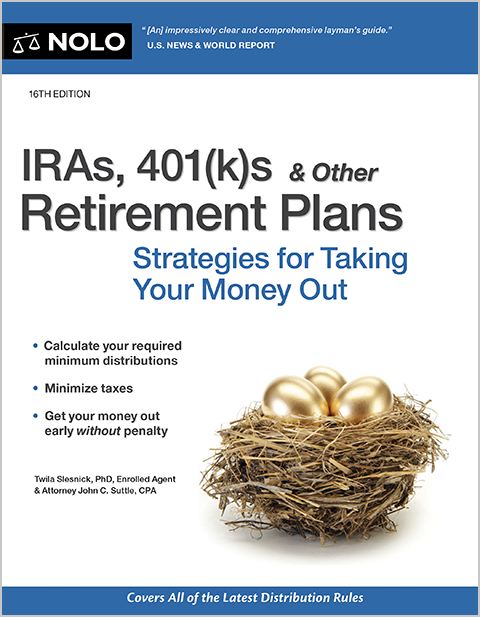See how your state's tax burden compares with other states.
Do you think your state's tax burden is too high? If so, where can you move with lower taxes? This question is harder to answer than you might think.
How the State Tax Systems Work
Each of the 50 states has its own tax system that's completely separate from the federal tax system that the IRS administers. State taxes can include:
- income taxes
- state sales taxes
- property taxes (imposed at the state level by 36 states)
- excise taxes (for example, taxes on gasoline, cigarettes, and liquor)
- user fees (for example, fees to camp in state parks or to drive on state highways), and
- other taxes, such as death and gift taxes, and documentary and stock transfer taxes.
The mix of taxes the states use to finance their activities can vary markedly from state to state. For example, eight states don't have income taxes: Alaska, Florida, Nevada, South Dakota, Tennessee, Texas, Washington, and Wyoming. New Hampshire's state income tax applies only to dividend and interest income, not wages. (The income and dividends tax in New Hampshire will be completely phased out on January 1, 2025.) And five states have no state sales taxes: Alaska, Delaware, Montana, New Hampshire, and Oregon.
To determine which states have the highest and lowest taxes, you have to look at all of the taxes each state charges. For example, the fact that New Hampshire has no sales tax and a limited income tax doesn't necessarily mean it has lower taxes overall than Massachusetts, which has an income tax on wages and sales tax.
How to Determine Which States Have Lower Taxes
So how do you tell whether, say, New Hampshire has lower taxes than Massachusetts? A couple of the various ways to measure state tax burdens include:
- by the percentage of all state residents' total income that goes to state and local taxes, and
- how much a typical taxpayer actually pays.
Percentage of State Residents' Total Income
One simple way to rank state tax burdens is by the percentage of all state residents' total income that goes to state and local taxes.
|
State and Local Tax Burden as a Percentage of State Income, Fiscal Year 2019
|
||
|
State |
Tax Burden |
Rank |
|
Alabama |
9.0% |
38 |
|
Alaska |
5.8% |
50 |
|
Arizona |
8.7% |
45 |
|
Arkansas |
10.4% |
17 |
|
California |
11.5% |
8 |
|
Colorado |
9.4% |
34 |
|
Connecticut |
12.8% |
2 |
|
Delaware |
10.3% |
18 |
|
Florida |
8.8% |
43 |
|
Georgia |
8.9% |
41 |
|
Hawaii |
12.7% |
3 |
|
Idaho |
10.8% |
31 |
|
Illinois |
11.1% |
10 |
|
Indiana |
8.9% |
39 |
|
Iowa |
10.8% |
13 |
|
Kansas |
10.1% |
22 |
|
Kentucky |
9.9% |
25 |
|
Louisiana |
9.2% |
36 |
|
Maine |
11.0% |
12 |
|
Maryland |
11.8% |
6 |
|
Massachusetts |
10.5% |
15 |
|
Michigan |
10.0% |
23 |
|
Minnesota |
12.1% |
5 |
|
Mississippi |
9.5% |
33 |
|
Missouri |
9.2% |
35 |
|
Montana |
10.1% |
21 |
|
Nebraska |
10.3% |
19 |
|
Nevada |
9.7% |
29 |
|
New Hampshire |
9.7% |
28 |
|
New Jersey |
11.7% |
7 |
|
New Mexico |
8.8% |
44 |
|
New York |
14.1% |
1 |
|
North Carolina |
9.5% |
32 |
|
North Dakota |
8.9% |
42 |
|
Ohio |
10.3% |
20 |
|
Oklahoma |
8.2% |
46 |
|
Oregon |
11.1% |
11 |
|
Pennsylvania |
10.4% |
16 |
|
Rhode Island |
11.4% |
9 |
|
South Carolina |
8.9% |
48 |
|
South Dakota |
9.1% |
37 |
|
Tennessee |
7.0% |
48 |
|
Texas |
8.0% |
47 |
|
Utah |
9.6% |
38 |
|
Vermont |
12.3% |
4 |
|
Virginia |
10.0% |
24 |
|
Washington |
9.8% |
27 |
|
West Virginia |
9.9% |
26 |
|
Wisconsin |
10.7% |
14 |
|
Wyoming |
7.0% |
49 |
Based on this chart, New Hampshire taxpayers pay 9.7% of their total income to state and local taxes. Massachusetts taxpayers pay 10.5%.
But the above chart provides a rather crude measurement of comparative state and local tax burdens because everybody is lumped together regardless of income. Depending on your income, you might have to pay more (or less) than this chart indicates.
How Much a Typical Taxpayer Actually Pays
A much more sophisticated measure of a state's tax burden is to look at how much a typical taxpayer actually pays. The following chart measures the state and local tax burden for a household earning the median income in the United States.
The median income in the United States was $82,852 in 2020. This chart also assumes the household owns a home worth $349,400 (the median new home price) and has one dependent child.
|
State and Local Tax Burden for Median Income State Households |
||
|
State |
Total State and Local Tax Burden 2020 |
Rank |
|
Alabama |
8.3% |
36 |
|
Alaska |
5.4% |
48 |
|
Arizona |
6.8% |
43 |
|
Arkansas |
10.4% |
21 |
|
California |
8.0% |
38 |
|
Colorado |
7.5% |
40 |
|
Connecticut |
15.1% |
2 |
|
Delaware |
7.3% |
41 |
|
Florida |
5.6% |
47 |
|
Georgia |
10.8% |
18 |
|
Hawaii |
8.4% |
34 |
|
Idaho |
8.8% |
32 |
|
Illinois |
16.8% |
1 |
|
Indiana |
8.8% |
31 |
|
Iowa |
13.8% |
6 |
|
Kansas |
12.3% |
1 |
|
Kentucky |
9.9% |
23 |
|
Louisiana |
7.9% |
39 |
|
Maine |
11.0% |
12 |
|
Maryland |
11.4% |
15 |
|
Massachusetts |
11.8% |
12 |
|
Michigan |
12.4% |
10 |
|
Minnesota |
10.7% |
19 |
|
Mississippi |
9.7% |
36 |
|
Missouri |
9.2% |
30 |
|
Montana |
8.1% |
37 |
|
Nebraska |
12.6% |
9 |
|
Nevada |
4.7% |
49 |
|
New Hampshire |
14.1% |
4 |
|
New Jersey |
14.3% |
3 |
|
New Mexico |
8.4% |
35 |
|
New York |
13.9% |
5 |
|
North Carolina |
9.2% |
29 |
|
North Dakota |
6.7% |
44 |
|
Ohio |
10.9% |
17 |
|
Oklahoma |
9.9% |
2 |
|
Oregon |
11.2% |
1 |
|
Pennsylvania |
11.5% |
14 |
|
Rhode Island |
11.6% |
13 |
|
South Carolina |
8.6% |
33 |
|
South Dakota |
7.2% |
42 |
|
Tennessee |
6.5% |
46 |
|
Texas |
9.7% |
25 |
|
Utah |
9.4% |
28 |
|
Vermont |
12.6% |
8 |
|
Virginia |
9.8% |
24 |
|
Washington |
6.5% |
45 |
|
West Virginia |
9.5% |
27 |
|
Wisconsin |
13.2% |
7 |
|
Wyoming |
4.0% |
50 |
Based on this chart, New Hampshire taxpayers with median incomes pay 14.1% of their income in state and local taxes. Massachusetts taxpayers with the same median incomes pay less—11.8%. It's likely that taxes take up more of a median income household's income in New Hampshire because it doesn't have a state income tax on wages graduated by income. Instead, it relies more on property taxes, which aren't based on a taxpayer's income.
So, if you're a middle-income person, you'll pay a smaller portion of your income in state and local tax in Massachusetts than in New Hampshire. The fact that New Hampshire doesn't have an income tax on wages isn't good for the average taxpayer.
Talk to a Tax Attorney
Need a lawyer? Start here.
How it Works
- Briefly tell us about your case
- Provide your contact information
- Choose attorneys to contact you
- Briefly tell us about your case
- Provide your contact information
- Choose attorneys to contact you

